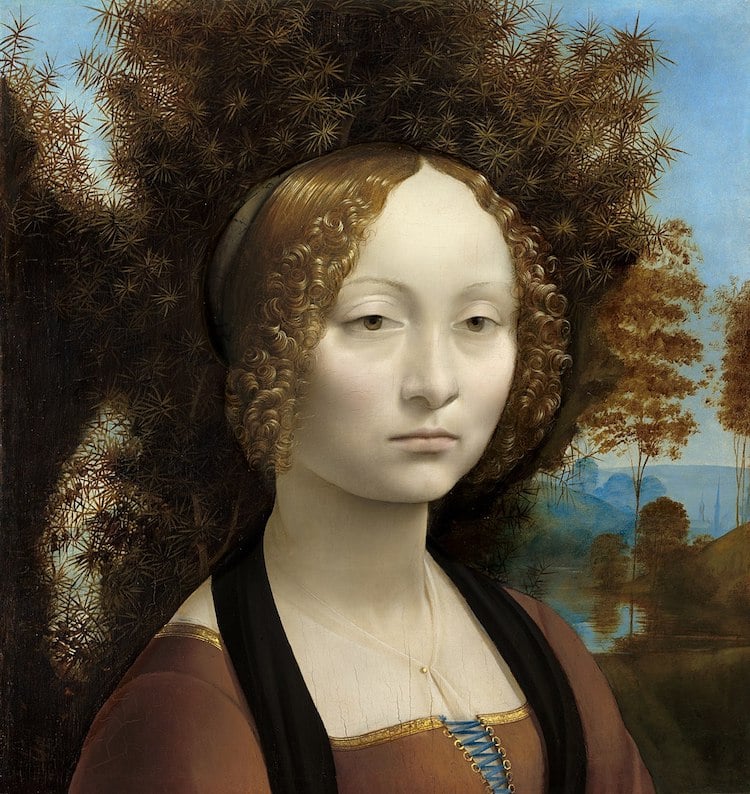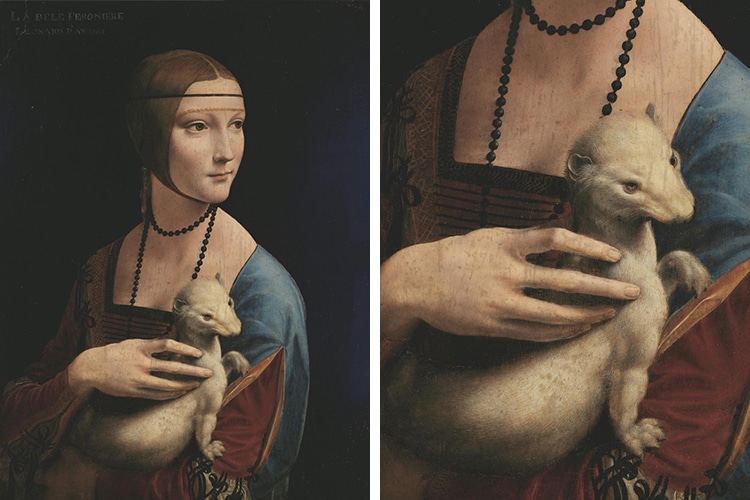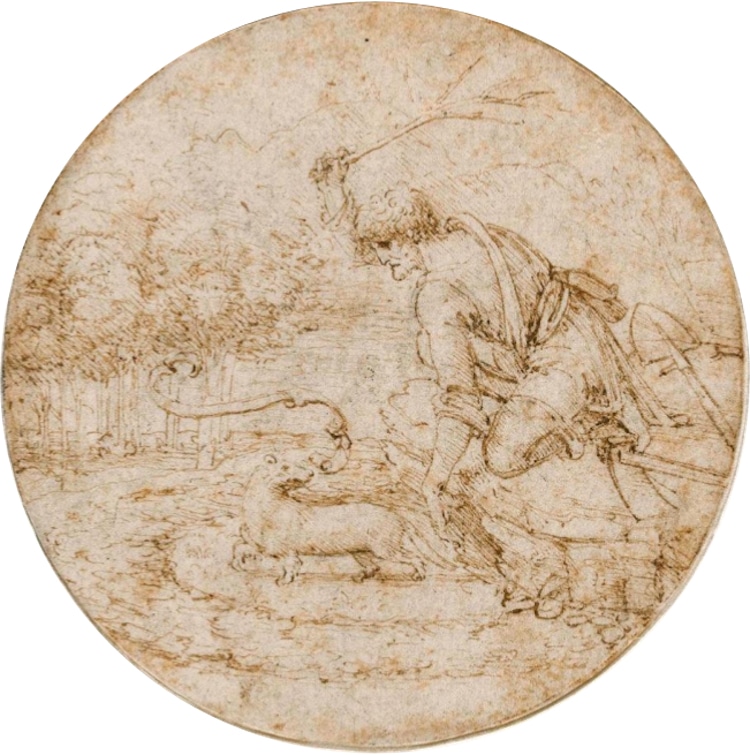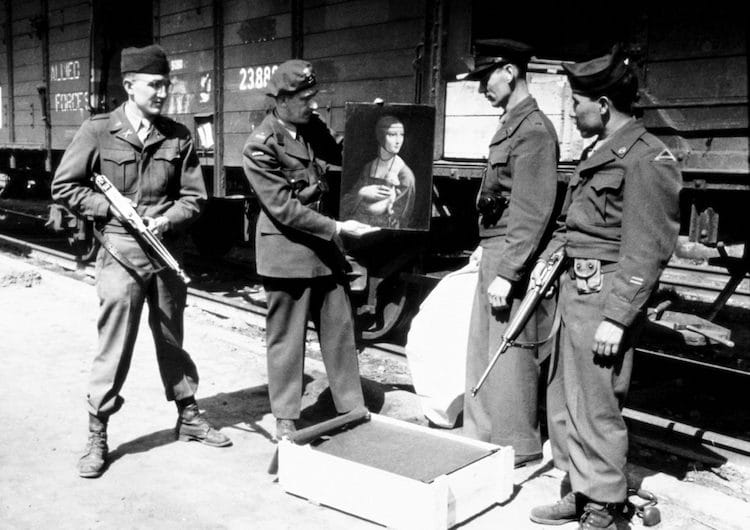Leonardo da Vinci, Lady with an Ermine, c. 1489-91.
(Photo: Public Domain, viaWikimedia Commons.)
Renaissance masterLeonardo da Vinciproduced vast amounts of work in the fields of art and science.

Leonardo da Vinci, “Lady with an Ermine,” c. 1489-91. (Photo: Public Domain, viaWikimedia Commons.)
From hisnumerous notebooks filled with drawingsto large biblical frescoes and oil paintings, there is a lot to explore.
EntitledLady with an Ermine, this oil painting is a classic example of High Renaissance portraiture and thechiaroscurostyle.
Renaissance Portraiture
Leonardo da Vinci, Ginevra de Benci, c. 1474-78.

Leonardo da Vinci, “Ginevra de’ Benci,” c. 1474-78. (Photo: Public Domain, viaWikimedia Commons.)
(Photo: Public Domain, viaWikimedia Commons.)
TheItalian Renaissanceis characterized by a renewed interest in classical ideals, including naturalism in art.
His most celebrated work of art, theMona Lisa, is often regarded as the hallmark of Renaissance portraiture.

Left: Giovanni Ambrogio de Predis, Portrait of Ludovico Sforza,” c. 1452-1508. (Photo: Public Domain, viaWikimedia Commons.) | Right: Engraving by Cosomo Colombini after Leonardo da Vinci’s self portrait, ca. 1500. (Photo:Stock Photosfrom Everett Collection/Shutterstock)
(Photo: Public Domain, viaWikimedia Commons.)
| Right: Engraving by Cosomo Colombini after Leonardo da Vincis self portrait, ca.
(He was the same person who commissioned the mural painting,The Last Supper).

Leonardo da Vinci, “Lady with an Ermine,” c. 1489-91. (Photo: Public Domain, viaWikimedia Commons.)
The subject of the portrait is Sforza’s 16-year-old mistress,Cecilia Gallerani.
In her arms she holds a white weasel, also called an ermine.
Like all of Da Vinci’s paintings, the portrait of Gallerani displays a commitment to naturalism.

Leonardo da Vinci, “The Ermine Hunt,” pen and brown ink over traces of black chalk on paper, c. 1490. (Photo: Public Domain, viaWikimedia Commons.)
It is also made in thechiaroscurostylea technique emphasizing light and shadow to create visual depth.
However, historians attribute this to thecreature’s symbolic purpose.
For one, the ermine in its white, winter coat, was regarded as atraditional symbol of purity.

Photograph of the “Monuments Men” — Frank P. Albright, Everett Parker Lesley, Joe D. Espinosa — and Polish liaison officer Maj. Karol Estreicher pose with the painting upon its return to Poland in April, 1946. (Photo: Public Domain, viaWikimedia Commons.)
One of these sketches depicts an ermine surrendering to the hunter as a representation of these virtuous ideals.
By having the subject hold a white ermine, Da Vinci was referencing the woman’s purity.
(Photo: Public Domain, viaWikimedia Commons.)
So, in having the sitter hold the animal, the painting confirms their romantic relationship.
(Photo: Public Domain, viaWikimedia Commons.)
After Da Vinci’s patron died, theLady with an Ermineexchanged many hands.
Eventually, in the 1880s the painting was housed in the Czartoryski’s family home in Krakow, Poland.
It remained there until WWII whenNazis stole it and sent it to the Kaiser Friedrich Museum in Berlin.
The portrait subsequently became of interest to the Governor-General of Poland, Hans Frank.